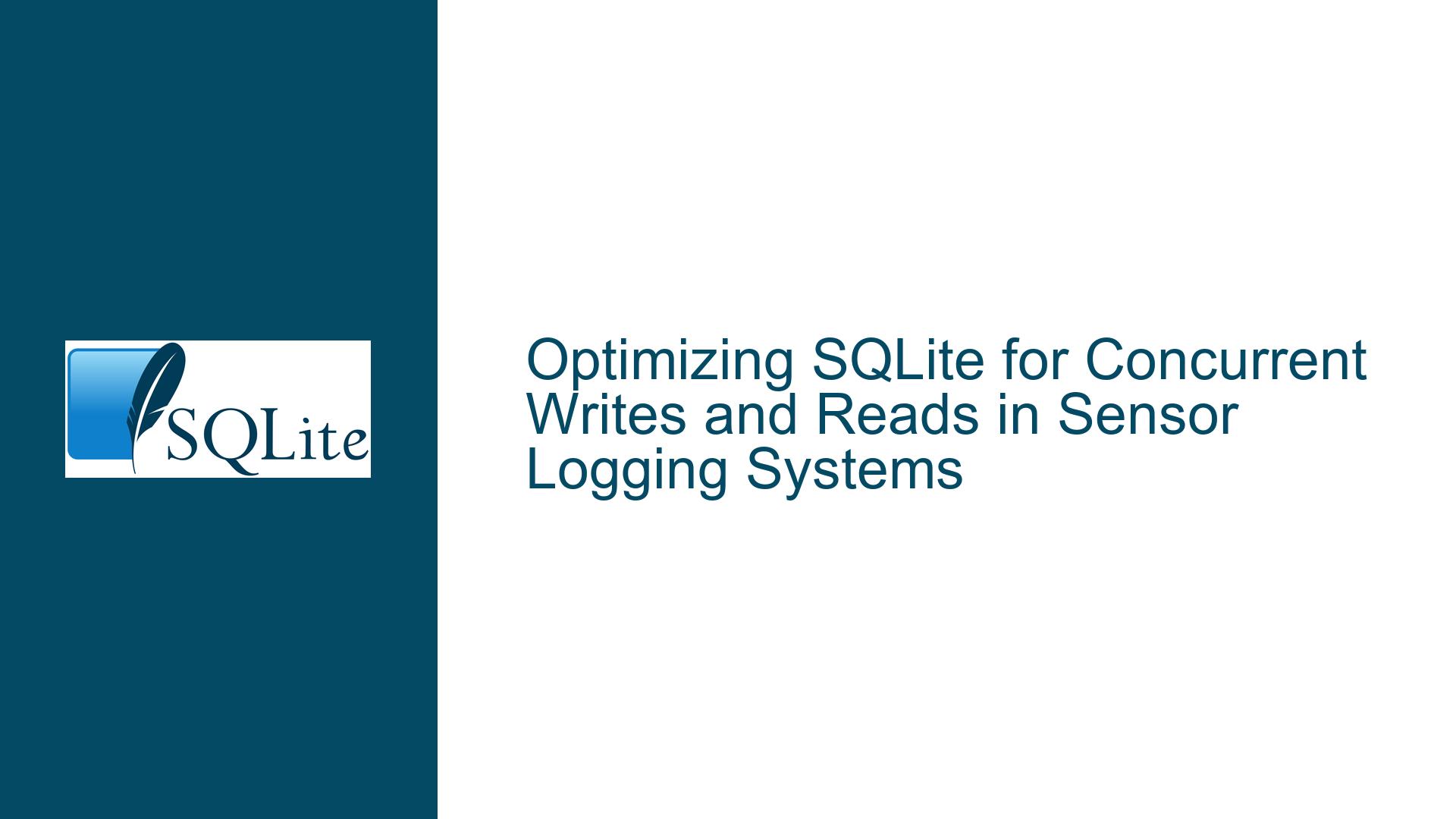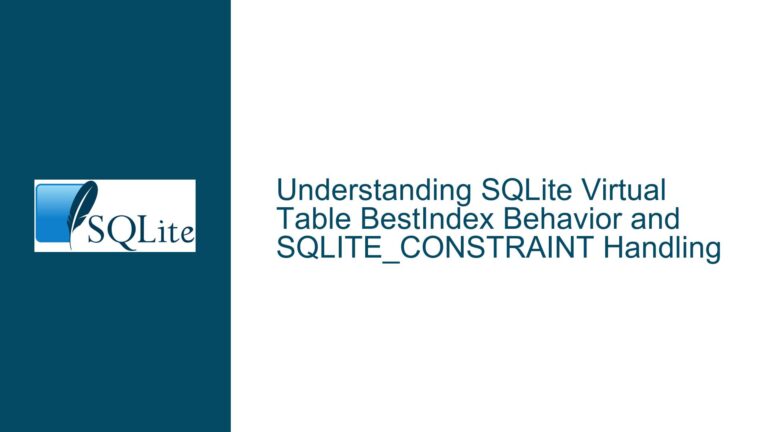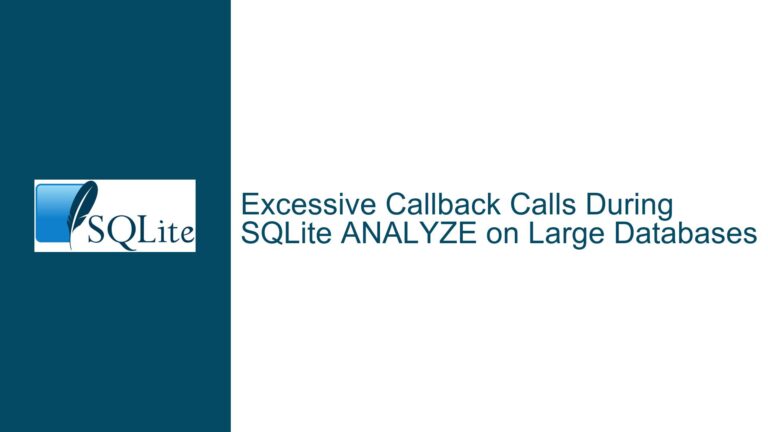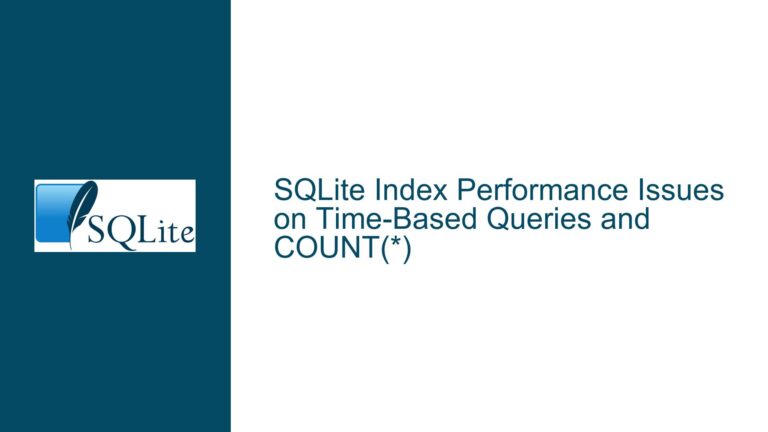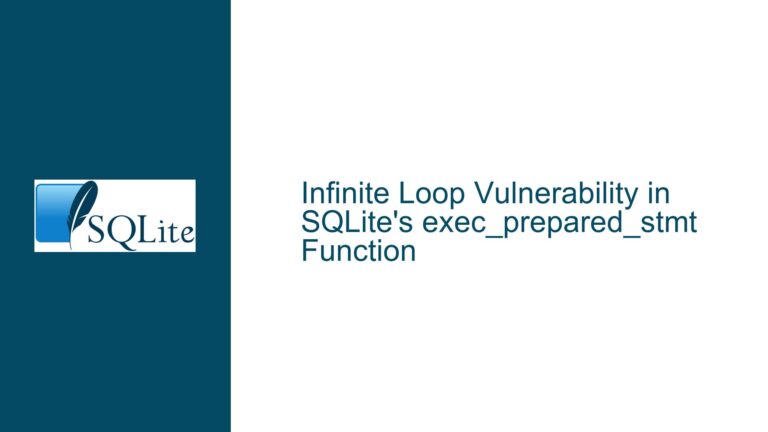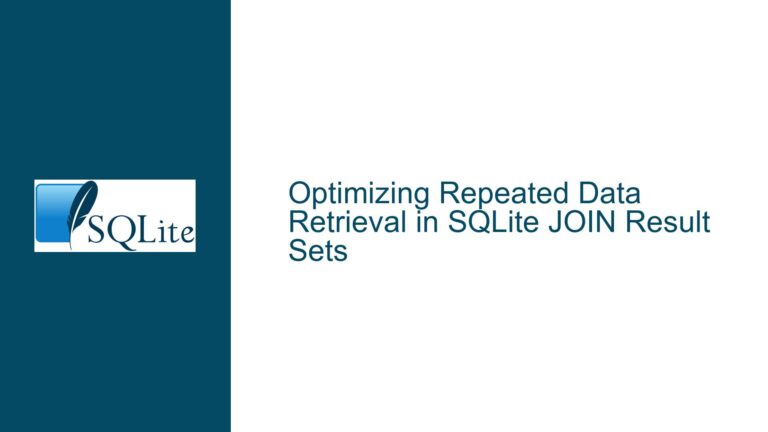Optimizing SQLite for Concurrent Writes and Reads in Sensor Logging Systems
Understanding SQLite Write Locking and Sensor Data Logging
SQLite is a lightweight, serverless database engine that is widely used in embedded systems, IoT devices, and applications where simplicity and portability are key. However, one of the common challenges with SQLite is its handling of concurrent writes and reads, especially in scenarios where high-frequency data logging is involved, such as logging temperatures from 40 sensors every minute. This issue arises because SQLite uses a file-based locking mechanism to ensure data integrity, which can lead to contention between read and write operations.
When a write operation is initiated, SQLite locks the entire database file, preventing other processes from reading or writing until the transaction is complete. This can create bottlenecks in systems where both logging and real-time data access are required. The core of the problem lies in balancing the need for frequent data logging with the requirement for uninterrupted access to the "normal" database for other operations.
Exploring the Benefits of Separate Databases and WAL Mode
One potential solution to mitigate write contention is to separate the logging database from the "normal" database. By maintaining two distinct databases, you can isolate the high-frequency write operations of sensor logging from the read/write operations of the main database. This separation can reduce contention and improve overall system performance. SQLite allows multiple database connections within the same program, enabling simultaneous access to different databases. This means that while one connection is writing to the logging database, another connection can read or write to the "normal" database without significant blocking.
Another critical consideration is the use of SQLite’s Write-Ahead Logging (WAL) mode. WAL mode is a journaling mechanism that allows readers to continue accessing the database while a write operation is in progress. In WAL mode, writes are appended to a separate log file, and readers can access the database as it existed before the write began. This significantly reduces contention between readers and writers, making it an excellent choice for systems with high-frequency writes and concurrent reads.
However, it’s essential to note that while WAL mode can improve concurrency, it does not eliminate all forms of contention. For example, if multiple write operations are attempted simultaneously, they will still be serialized. Additionally, WAL mode requires careful management of the WAL file size, as it can grow indefinitely if not properly maintained.
Implementing Efficient Write Strategies and Connection Management
To further optimize the system, it’s crucial to implement efficient write strategies and connection management. One approach is to buffer sensor readings in memory and write them to the database in a single transaction. This reduces the number of write operations and minimizes the time the database is locked. For instance, instead of writing each of the 40 sensor readings individually, you can collect all 40 readings in memory and write them in one transaction. This approach significantly reduces the write duty cycle, leaving more time for other database operations.
Connection management is another critical factor. Opening and closing database connections frequently can introduce significant overhead and should be avoided. Instead, open a single connection when the data collection process starts and keep it open for the duration of the process. Use transactions to group write operations, ensuring that all sensor readings are written together. This minimizes the time the database is locked and improves overall efficiency.
For example, you can structure your write operations as follows:
BEGIN IMMEDIATE;
INSERT INTO sensor_log (sensor_id, temperature, timestamp) VALUES (1, 25.3, '2023-10-01 12:00:00');
INSERT INTO sensor_log (sensor_id, temperature, timestamp) VALUES (2, 26.1, '2023-10-01 12:00:01');
-- Repeat for all 40 sensors
COMMIT;
This approach ensures that all 40 sensor readings are written in a single transaction, reducing the time the database is locked and improving concurrency.
Addressing Potential Constraints and Practical Considerations
While the above strategies can significantly improve performance, it’s essential to consider potential constraints and practical considerations. For instance, if the logging database and the "normal" database are stored on the same storage device, disk I/O contention can still occur, even with separate databases. In such cases, using different storage devices for each database can further reduce contention and improve performance.
Another consideration is the frequency of data consolidation. If the logging database is used solely for temporary storage, you may need to periodically consolidate the data into the "normal" database. This process should be carefully managed to avoid introducing additional contention. One approach is to perform data consolidation during periods of low activity, ensuring that it does not interfere with real-time operations.
Finally, it’s important to monitor and tune the system regularly. SQLite provides several pragmas and configuration options that can be adjusted to optimize performance. For example, you can adjust the synchronous pragma to balance between data integrity and performance. Setting PRAGMA synchronous=NORMAL or PRAGMA synchronous=OFF can improve write performance, but it comes at the cost of increased risk of data corruption in the event of a crash. Therefore, these settings should be chosen based on the specific requirements of your application.
Conclusion
Optimizing SQLite for concurrent writes and reads in a sensor logging system requires a combination of strategies, including separating databases, using WAL mode, implementing efficient write strategies, and careful connection management. By understanding the nuances of SQLite’s locking mechanisms and applying these techniques, you can achieve a balance between high-frequency data logging and uninterrupted access to the "normal" database. Regular monitoring and tuning are essential to ensure that the system continues to perform efficiently as the data volume and access patterns evolve.
